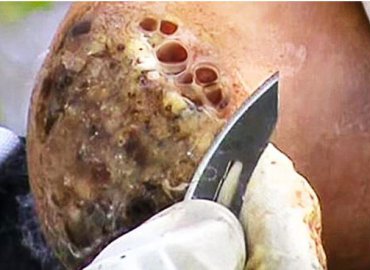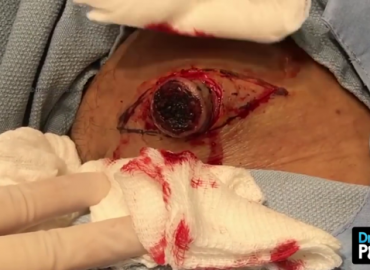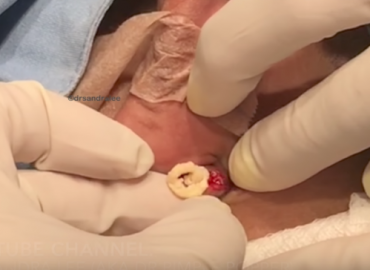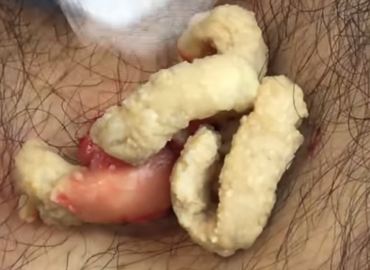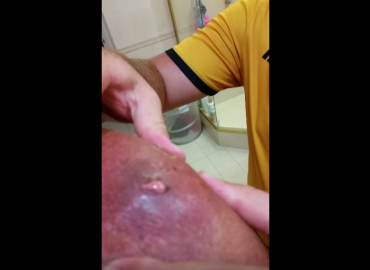If you’ve ever had an ingrown toenail, you know the pain that it can cause. Not only that, but it’s annoying because we use our toes in some way or another as part of our usual daily movement, and this use and constant knocking seems to aggravate the nail even more. It makes it more noticeable and seems to last forever!
An ingrown toenail, or onychocryptosis, may occur at any age and is one of the mostly common toenail problems. It can be a painful condition that can become infected if not properly cared for. While more studies need to be conducted, there are a few that suggest a slightly higher male-to-female ratio, particularly in the 14–25 age group — however, it can affect patients of any age.
There are multiple reasons why an ingrown toenail develops, including improper nail-cutting technique, tight-fitting footwear, trauma, anatomical factors like thickening of the nail plate, a pincer-shaped toenail, pressure from abutting digits caused by hallux valgus or lesser toe deformities, the presence of a subungual exostosis, and occasionally, the use of isotretinoin in the treatment of severe acne.
Something that’s often forgotten is that toenail fungus can become part of the problem too. Usually, nail fungus occurs when fungus enters the nail through a small trauma, such as a cut or break, in the nail. Though often a misconception, nail fungus is not caused by poor hygiene — however, if you have an ingrown toenail, you need to be conscious of keeping the area clean.
Luckily, there are many natural ways to get rid of an ingrown toenail on your own without needing a trip to the doctor. Let’s take a look at some more detail on ingrown toenails and how to get rid of them.
How to Cut an Ingrown Toenail
 Cutting an ingrown toenail can be difficult, which is why I recommend that you’re very careful and have some help if you choose to do it at home. Here’s a step-by-step guide:
Cutting an ingrown toenail can be difficult, which is why I recommend that you’re very careful and have some help if you choose to do it at home. Here’s a step-by-step guide:
- First, soak your feet in warm water mixed with either epsom salt or Castile soap for about 20 minutes to help soften the toenail and skin and reduce any swelling.
- Next, using clean fingers, push back the swollen skin carefully. This will likely be uncomfortable. Don’t force it back more than the swollen skin allows.
- Now, you need to cut the nail straight across. Start with the edges of the toenail, cutting the nail from the sides, not from the middle.
- Place a small piece of cotton between the ingrown nail and skin. This helps the ingrown toenail from coming back, allowing it to grow correctly.
- Apply the ointment in the recipe below to the affected area, and bandage it carefully.
- To help with healing, avoid wearing socks and shoes while at home. Wear flip-flops or some shoe that avoids dirt but allows open air.
- It’s important to prevent infection by changing the cotton daily, maybe even twice a day.
Homemade Ingrown Toenail Ointment Recipe
You can make your very own ointment to help heal an ingrown toenail. Essential oils can help relieve pain and prevent infection. By putting this ointment directly on your toe, you can find some much-needed relief and and faster healing.
INGREDIENTS:
- 5 drops eucalyptus oil
- 5 drops tea tree oil
- 1 drop oregano oil
- 5 drops lavender oil
- 2 drops peppermint oil
- 2 ounces aloe vera gel
- 2 ounces coconut oil
DIRECTIONS:
- Place all ingredients in a small glass jar with a tight-fitting lid.
- Using a small spoon, stir until well-blended.
- After careful cleansing and rinsing of the toe, apply the ointment on the area.
- Allow it to air dry, if possible, by wearing flip-flops. If not, carefully and loosely bandage the toe, but make sure to wear loose-fitting shoes.
- Redress the area two to three times per day. Make sure to wash the hands after and avoid the eyes, especially when using oregano oil. Oregano is a natural antibiotic but can be very strong giving a burning sensation. It’s important to use these oils as prescribed, with a carrier oil such as the coconut oil.


